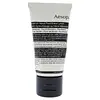What's inside
What's inside
 Key Ingredients
Key Ingredients

No key ingredients
 Benefits
Benefits

 Concerns
Concerns

 Ingredients Side-by-side
Ingredients Side-by-side

Water
Skin ConditioningRosa Canina Fruit Oil
EmollientGlycerin
HumectantCetearyl Olivate
Cetearyl Alcohol
EmollientStearic Acid
CleansingHamamelis Virginiana Water
AstringentSorbitan Olivate
EmulsifyingButyrospermum Parkii Butter
Skin ConditioningPolysorbate 20
EmulsifyingPhenoxyethanol
PreservativeOlea Europaea Fruit Oil
MaskingFusanus Spicatus Wood Oil
MaskingBisabolol
MaskingPanthenol
Skin ConditioningSodium Benzoate
MaskingDisodium EDTA
Sodium Citrate
BufferingPogostemon Cablin Leaf Oil
MaskingCitrus Aurantium Dulcis Flower Oil
AstringentEugenia Caryophyllus Flower Oil
MaskingZingiber Officinale Root Extract
MaskingBenzoic Acid
MaskingFarnesol
PerfumingEugenol
PerfumingLinalool
PerfumingLimonene
PerfumingGeraniol
PerfumingWater, Rosa Canina Fruit Oil, Glycerin, Cetearyl Olivate, Cetearyl Alcohol, Stearic Acid, Hamamelis Virginiana Water, Sorbitan Olivate, Butyrospermum Parkii Butter, Polysorbate 20, Phenoxyethanol, Olea Europaea Fruit Oil, Fusanus Spicatus Wood Oil, Bisabolol, Panthenol, Sodium Benzoate, Disodium EDTA, Sodium Citrate, Pogostemon Cablin Leaf Oil, Citrus Aurantium Dulcis Flower Oil, Eugenia Caryophyllus Flower Oil, Zingiber Officinale Root Extract, Benzoic Acid, Farnesol, Eugenol, Linalool, Limonene, Geraniol
Water
Skin ConditioningAlcohol Denat.
AntimicrobialAloe Barbadensis Leaf Juice
Skin ConditioningLinum Usitatissimum Seed Extract
PerfumingDiethylhexyl Malate
EmollientC12-15 Alkyl Benzoate
AntimicrobialPPG-26 Oleate
EmollientPrunus Amygdalus Dulcis Shell Extract
Skin ConditioningAlthaea Officinalis Root Extract
Skin ConditioningDisodium Cocoamphodiacetate
CleansingPhospholipids
Skin ConditioningBisabolol
MaskingPanthenol
Skin ConditioningTocopheryl Acetate
AntioxidantAloe Barbadensis Leaf Extract
EmollientDimethicone
EmollientAcrylates/C10-30 Alkyl Acrylate Crosspolymer
Emulsion StabilisingIsododecane
EmollientMyreth-3 Myristate
EmollientHexyldecyl Stearate
EmollientButylene Glycol
HumectantHamamelis Virginiana Extract
AntiseborrhoeicCarbomer
Emulsion StabilisingTriethanolamine
BufferingXanthan Gum
EmulsifyingTrisodium EDTA
Phenoxyethanol
PreservativeChlorphenesin
AntimicrobialWater, Alcohol Denat., Aloe Barbadensis Leaf Juice, Linum Usitatissimum Seed Extract, Diethylhexyl Malate, C12-15 Alkyl Benzoate, PPG-26 Oleate, Prunus Amygdalus Dulcis Shell Extract, Althaea Officinalis Root Extract, Disodium Cocoamphodiacetate, Phospholipids, Bisabolol, Panthenol, Tocopheryl Acetate, Aloe Barbadensis Leaf Extract, Dimethicone, Acrylates/C10-30 Alkyl Acrylate Crosspolymer, Isododecane, Myreth-3 Myristate, Hexyldecyl Stearate, Butylene Glycol, Hamamelis Virginiana Extract, Carbomer, Triethanolamine, Xanthan Gum, Trisodium EDTA, Phenoxyethanol, Chlorphenesin
Alternatives
Ingredients Explained
These ingredients are found in both products.
Ingredients higher up in an ingredient list are typically present in a larger amount.
Bisabolol is famous for its skin soothing properties. It does this by blocking inflammatory signals, helping to reduce your body's reaction to irritation.
This ingredient also interferes with the process of hyperpigmentation. This can help with reducing dark spots and uneven tone.
Bisabolol is an antioxidant. Antioxidants help fight free-radicals. Free-radicals are molecules that may damage your skin cells. By fighting these free-radicals, Bisabolol may slow down signs of aging.
Studies have shown Bisabolol to have antimicrobial properties and may be a fungicide. These properties help preserve a product's shelf life.
All these properties makes bisabolol a great skin barrier helper ingredient.
Bisabolol also helps the absorption of other ingredients.
Note: Synthetic Bisabolol has been shown to be less effective.
Learn more about BisabololPanthenol is a common ingredient that helps hydrate and soothe the skin. It is found naturally in our skin and hair.
There are two forms of panthenol: D and L.
D-panthenol is also known as dexpanthenol. Most cosmetics use dexpanthenol or a mixture of D and L-panthenol.
Panthenol is famous due to its ability to go deeper into the skin's layers. Using this ingredient has numerous pros (and no cons):
Like hyaluronic acid, panthenol is a humectant. Humectants are able to bind and hold large amounts of water to keep skin hydrated.
This ingredient works well for wound healing. It works by increasing tissue in the wound and helps close open wounds.
Once oxidized, panthenol converts to pantothenic acid. Panthothenic acid is found in all living cells.
This ingredient is also referred to as pro-vitamin B5.
Learn more about PanthenolPhenoxyethanol is a preservative that has germicide, antimicrobial, and aromatic properties. Studies show that phenoxyethanol can prevent microbial growth. By itself, it has a scent that is similar to that of a rose.
It's often used in formulations along with Caprylyl Glycol to preserve the shelf life of products.
Water. It's the most common cosmetic ingredient of all. You'll usually see it at the top of ingredient lists, meaning that it makes up the largest part of the product.
So why is it so popular? Water most often acts as a solvent - this means that it helps dissolve other ingredients into the formulation.
You'll also recognize water as that liquid we all need to stay alive. If you see this, drink a glass of water. Stay hydrated!
Learn more about Water